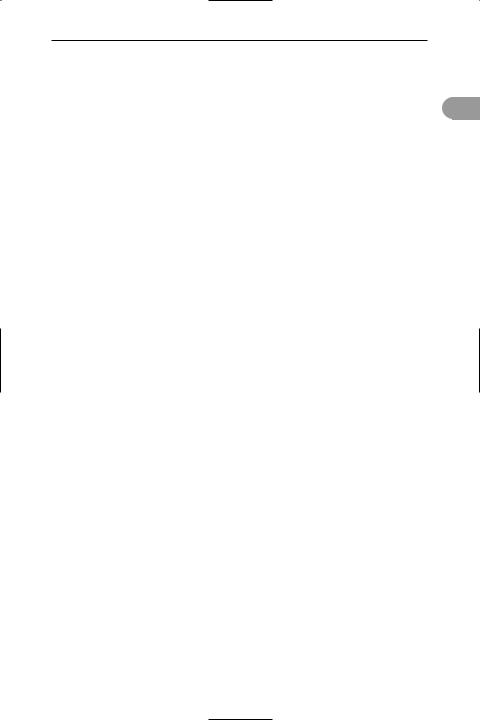
A Dictionary of Science
.pdf
chemical engineering |
156 |
slowly replaced by Ûuoride ions from the ground water. Measurement of the proportion of Ûuorine present gives a rough estimate of the time that the bones have
cbeen in the ground. Another, more accurate, method depends on the fact that amino acids in living organisms are l-optical isomers. After death, these racemize and the age of bones can be estimated by measuring the relative amounts of d- and l-amino acids present.
chemical engineering The study of the design, manufacture, and operation of plant and machinery in industrial chemical processes.
chemical equation A way of denoting a chemical reaction using the symbols for the participating particles (atoms, molecules, ions, etc.); for example,
xA + yB → zC + wD
The single arrow is used for an irreversible reaction; double arrows (ˆ) are used for reversible reactions. When reactions involve different phases it is usual to put the phase in brackets after the symbol (s = solid; l = liquid; g = gas; aq = aqueous). The numbers x, y, z, and w, showing the relative numbers of molecules reacting, are called the stoichiometric coefÜcients. The sum of the coefÜcients of the reactants minus the sum of the coefÜcients of the products (x + y – z – w in the example) is the stoichiometric sum. If this is zero the equation is balanced. Sometimes a generalized chemical equation is considered
ν1A1 + ν2A2 + … → … νnAn + νn+1An+1 …
In this case the reaction can be written ΣνiAi = 0, where the convention is that stoichiometric coefÜcients are positive for reactants and negative for products. The stoichiometric sum is Σνi.
chemical equilibrium A reversible chemical reaction in which the concentrations of reactants and products are not changing with time because the system is in thermodynamic equilibrium. For example, the reversible reaction
3H2 + N2 ˆ 2NH3
is in chemical equilibrium when the rate of the forward reaction
3H2 + N2 → 2NH3
is equal to the rate of the back reaction
2NH3 → 3H2 + N2
See also equilibrium constant.
chemical equivalent See equivalent weight.
chemical fossil Any of various organic compounds found in ancient geological strata that appear to be biological in origin and are assumed to indicate that life existed when the rocks were formed. The presence of chemical fossils in Archaean strata indicates that life existed over 3500 million years ago.
chemical potential Symbol: µ. For a given component in a mixture, the coefÜcient ∂G/∂n, where G is the Gibbs free energy and n the amount of substance of the component. The chemical potential is the change in Gibbs free energy with respect to change in amount of the component, with pressure, temperature, and amounts of other components being constant. Components are in equilibrium if their chemical potentials are equal.
chemical reaction A change in which one or more chemical elements or compounds (the reactants) form new compounds (the products). All reactions are to some extent reversible; i.e. the products can also react to give the original reactants. However, in many cases the extent of this back reaction is negligibly small, and the reaction is regarded as irreversible.
chemical shift A change in the normal wavelength of absorption or emission of electromagnetic wavelength in a process in which there is a nuclear energy change (as in the *Mössbauer effect and *nuclear magnetic resonance) or a change in electron energy levels in the inner shells of an atom (as in X-ray *photoelectron spectroscopy).
chemiluminescence See luminescence.
chemiosmotic theory A theory postulated by the British biochemist Peter Mitchell (1920–92) to explain the formation of ATP in the mitochondrial *electron transport chain. As electrons are

157 |
chernozem |
transferred along the electron carrier system in the inner mitochondrial membrane, hydrogen ions (protons) are actively transported (via *hydrogen carriers) into the space between the inner and outer mitochondrial membranes, which thus contains a higher concentration of protons than the matrix. This creates an electrochemical gradient across the inner membrane, down which protons move back into the matrix. This movement occurs through special channels associated with ATP synthetase, the enzyme that catalyses the conversion of ADP to ATP, and is coupled with the phosphorylation of ADP. A similar gradient is created across the thylakoid membranes of chloroplasts during the light-dependent reactions of *photosynthesis (see photophosphorylation).
chemisorption See adsorption.
chemistry The study of the elements and the compounds they form. Chemistry is mainly concerned with effects that depend on the outer electrons in atoms. See biochemistry; geochemistry; inorganic chemistry; organic chemistry; physical chemistry.
chemoautotroph See autotrophic nutrition; chemosynthesis.
chemoorganotroph An organism, especially a microorganism, that obtains its energy by the oxidation of organic compounds.
chemoreceptor A *receptor that detects the presence of particular chemicals and (in multicellular organisms) transmits this information to sensory nerves. Examples include the *taste buds and the receptors in the *carotid body.
chemosynthesis A type of *autotrophic nutrition in which organisms (called chemoautotrophs) synthesize organic materials using energy derived from the oxidation of inorganic chemicals, rather than from sunlight. Most chemoautotrophs are bacteria, including Nitrosomonas, which oxidizes ammonium to nitrite, and Thiobacillus, which oxidizes sulphur to sulphate.
chemosystematics See systematics.
chemotaxis See taxis.
chemotaxonomy The *classiÜcation of plants and microorganisms based on similarities and differences in their natural products and the biochemical pathways
involved in their manufacture. See also c taxonomy.
chemotherapy The use of chemicals, especially drugs, in the treatment of disease. The term is often used speciÜcally to denote drug therapy for cancer, as distinct from treatments with radiation (radiotherapy).
chemotropism The growth or movement of a plant or plant part in response to a chemical stimulus. An example is the growth of a pollen tube down the style during fertilization in response to the presence of sugars in the style.
chernozem (black earth) A type of soil that is characteristic of the continental interiors of the mid-latitudes, in which grassland formed the natural vegetation. Chernozems occur across the Russian steppes and parts of Romania and Hungary; these soils also occur in North America. The deep surface layer (A horizon) of a chernozem is black and rich in alkaline humus derived from the decomposition of the natural grassland vegetation. The underlying horizon contains calcium carbonate concretions. Chernozems are im-
black or dark-brown crumb structure
nodules of calcium carbonate
transition to limerich parent material (e.g. loess)
grasses horizon
A
B (the B horizon is often absent in chernozems and only a very deep A horizon is visible)
C
Chernozem soil profile

chert |
158 |
portant agriculturally and most have been ploughed up for cereal production.
chert See flint.
cchiasma (pl. chiasmata) The point at which paired *homologous chromosomes
remain in contact as they begin to separate during the Ürst prophase of *meiosis,
forming a cross shape. A number of chiasmata can usually be identiÜed and at these points *crossing over occurs.
Chile saltpetre A commercial mineral largely composed of *sodium nitrate from the caliche deposits in Chile. Before the ammonia-oxidation process for nitrates most imported Chilean saltpetre was used by the chemical industry; its principal use today is as an agricultural source of nitrogen.
Chilopoda A class of terrestrial *arthropods belonging to the phylum Uniramia and comprising the centipedes, characterized by a distinct head bearing one pair of poison jaws and 15–177 body segments, each bearing one pair of similar legs. Centipedes are fast-moving predators. See also myriapoda.
chimaera An organism composed of tissues that are genetically different. Chimaeras can develop if a *mutation occurs in a cell of a developing embryo. All the cells arising from it have the mutation and therefore produce tissue that is genetically different from adjacent tissue, e.g. brown patches in otherwise blue eyes in humans. *Graft hybrids are examples of plant chimaeras.
china clay See kaolin.
Chinese white See zinc oxide. chip See silicon chip.
chirality The property of existing in leftand right-handed structural forms. See optical activity.
chirality element The part of a molecule that makes it exist in leftand righthanded forms. In most cases this is a chirality centre (i.e. an asymmetric atom). In certain cases the element is a chirality axis. For example, in allenenes of the type
R1R2C=C=CR3R4 the C=C=C chain is a chirality axis. Certain ring compounds may
display chirality as a result of a chirality plane in the molecule.
Chiron A minor planet discovered in 1977. It has an orbit of 50.68 years that, unlike other known minor planets, lies almost entirely outside that of Saturn. Its diameter is uncertain, but appears to be of the order of 300 km.
Chiroptera An order of Ûying mammals comprising the bats. Their membranous wings are supported by very elongated forelimbs and digits and stretch along the sides of the body to the hindlimbs and tail. Whenever bats rest they allow their body temperature to fall, hibernating in winter when food is scarce. Most bats are nocturnal; their ears are enlarged and specialized for *echolocation, which they use to hunt prey and avoid obstacles. Bats feed variously on insects, fruit, nectar, or blood.
chi-squared test A procedure in
*statistics to test how well a frequency distribution matches one predicted theoretically. Statistical tables are used to assess the signiÜcance of the result obtained by calculating χ2 = Σ(O – E)2/E, where O are the observed frequencies and E are the predicted frequencies.
chitin A *polysaccharide comprising chains of N-acetyl-d-glucosamine, a derivative of glucose. Chitin is structurally very similar to cellulose and serves to strengthen the supporting structures of various invertebrates. It also occurs in fungi.
chloral See trichloroethanal.
chloral hydrate See 2,2,2-trichloro- ethanediol.
chlorates Salts of the chloric acids; i.e. salts containing the ions ClO– (chlorate(I) or hypochlorite), ClO2– (chlorate(III) or chlorite), ClO3– (chlorate(V)), or ClO4– (chlorate(VII) or perchlorate). When used without speciÜcation of an oxidation state the term ‘chlorate’ refers to a chlorate(V) salt.
chlorenchyma *Parenchyma tissue that contains chloroplasts and is photosynthetic. Chlorenchyma makes up the mesophyll tissue of plant leaves and is also found in the stems of certain plant

159 |
chlorine |
species. Compare collenchyma (see ground tissues); sclerenchyma.
chloric acid Any of the oxoacids of chlorine: *chloric(I) acid, *chloric(III) acid, *chloric(V) acid, and *chloric(VII) acid. The term is commonly used without speciÜcation of the oxidation state of chlorine to mean chloric(V) acid, HClO3.
chloric(I) acid (hypochlorous acid) A liquid acid that is stable only in solution, HOCl. It may be prepared by the reaction of chlorine with an agitated suspension of mercury(II) oxide. Because the disproportionation of the ion ClO– is slow at low temperatures chloric(I) acid may be produced, along with chloride ions by the reaction of chlorine with water at 0°C. At higher temperatures disproportionation to the chlorate(V) ion, ClO3–, takes place. Chloric(I) acid is a very weak acid but is a mild oxidizing agent and is widely used as a bleaching agent.
chloric(III) acid (chlorous acid) A paleyellow acid known only in solution, HClO2. It is formed by the reaction of chlorine dioxide and water and is a weak acid and an oxidizing agent.
chloric(V) acid (chloric acid) A colourless unstable liquid, HClO3; r.d. 1.2; m.p. <–20°C; decomposes at 40°C. It is best prepared by the reaction of barium chlorate with sulphuric acid although chloric(V) acid is also formed by the disproportionation of chloric(I) acid in hot solutions. It is both a strong acid and a powerful oxidizing agent; hot solutions of the acid or its salts have been known to detonate in contact with readily oxidized organic material.
chloric(VII) acid (perchloric acid) An unstable liquid acid, HClO4; r.d. 1.76; m.p. –112°C; b.p. 39°C (50 mmHg); explodes at about 90°C at atmospheric pressure. There is also a monohydrate (r.d. 1.88 (solid), 1.77 (liquid); m.p. 48°C; explodes at about 110°C) and a dihydrate (r.d. 1.65; m.p. –17.8°C; b.p. 200°C). Commercial chloric(VII) acid is a water azeotrope, which is 72.5% HClO4, boiling at 203°C. The anhydrous acid may be prepared by vacuum distillation of the concentrated acid in the presence of magnesium perchlorate as a dehydrating agent.
Chloric(VII) acid is both a strong acid and a strong oxidizing agent. It is widely used to decompose organic materials prior to analysis, e.g. samples of animal or veg-
etable matter requiring heavy-metal anal- c ysis.
chloride See halide.
chloride shift The movement of chloride ions (Cl–) into red blood cells. Carbon dioxide reacts with water to form carbonic acid in the red blood cells (see carbonic anhydrase). The carbonic acid then dissociates into hydrogencarbonate ions (HCO3–) and hydrogen ions (H+). The plasma membrane is relatively permeable to negative ions. Therefore the hydrogencarbonate ions diffuse out of the cell into the blood plasma, leaving the hydrogen ions, which create a net positive charge; this is neutralized by the diffusion of chloride ions from the plasma into the cell.
chlorinating agent A chemical reagent that introduces chlorine atoms into a compound or substitutes chlorine for some other group. Examples include phosphorus pentachloride, PCl5, and sulphur dichloride oxide (thionyl chloride, SOCl2).
chlorination 1. A chemical reaction in which a chlorine atom is introduced into a compound. See halogenation. 2. The treatment of water with chlorine to disinfect it.
chlorine Symbol Cl. A *halogen element; a.n. 17; r.a.m. 35.453; d. 3.214
g dm–3; m.p. –100.98°C; b.p. –34.6°C. It is a poisonous greenish-yellow gas and occurs widely in nature as sodium chloride in seawater and as halite (NaCl), carnallite (KCl.MgCl2.6H2O), and sylvite (KCl). It is manufactured by the electrolysis of brine and also obtained in the *Downs process for making sodium. It has many applications, including the chlorination of drinking water, bleaching, and the manufacture of a large number of organic chemicals.
It reacts directly with many elements and compounds and is a strong oxidizing agent. Chlorine compounds contain the element in the 1, 3, 5, and 7 oxidation states. It was discovered by Karl Scheele in

chlorine dioxide |
160 |
1774 and Humphry Davy conÜrmed it as an element in 1810.
chlorine dioxide A yellowish-red explosive gas, ClO2; d. 3.09 g dm–3; m.p.
c–59.5°C; b.p. 9.9°C. It is soluble in cold water but decomposed by hot water to give chloric(VII) acid, chlorine, and oxygen. Because of its high reactivity, chlorine dioxide is best prepared by the
reaction of sodium chlorate and moist oxalic acid at 90°–100°C, as the product is then diluted by liberated carbon dioxide. Commercially the gas is produced by the reaction of sulphuric acid containing chlo-
ride ions with sulphur dioxide. Chlorine dioxide is widely used as a bleach in Ûour
milling and in wood pulping and also Ünds application in water puriÜcation.
chlorine monoxide See dichlorine oxide.
chlorite 1. See chlorates. 2. A group of layered silicate minerals, usually green or white in colour, that are similar to the micas in structure and crystallize in the monoclinic system. Chlorites are composed of complex silicates of aluminium, magnesium, and iron in combination with water, with the formula
(Mg,Al,Fe)12(Si,Al)8O20(OH)16. They are most common in low-grade metamorphic rocks and also occur as secondary minerals in igneous rocks as alteration products of pyroxenes, amphiboles, and micas. The term is derived from chloros, the Greek word for green.
chloroacetic acids See chloroethanoic acids.
chlorobenzene A colourless highly
Ûammable liquid, C6H5Cl; r.d. 1.106; m.p. –45.43°C; b.p. 131.85°C. It is prepared by the direct chlorination of benzene using a halogen carrier (see friedel–crafts reaction), or manufactured by the *Raschig process. It is used mainly as an industrial solvent.
2-chlorobuta-1,3-diene (chloroprene)
A colourless liquid chlorinated diene, CH2:CClCH:CH2; r.d. 0.96; b.p. 59°C. It is polymerized to make synthetic rubbers (e.g. neoprene).
chloroethane (ethyl chloride) A colourless Ûammable gas, C2H5Cl; m.p. –136.4°C;
b.p. 12.3°C. It is made by reaction of ethene and hydrogen chloride and used in making lead tetraethyl for petrol.
chloroethanoic acids (chloroacetic acids) Three acids in which hydrogen atoms in the methyl group of ethanoic acid have been replaced by chlorine atoms. They are: monochloroethanoic acid (CH2ClCOOH); dichloroethanoic acid (CHCl2COOH); trichloroethanoic acid
(CCl3COOH). The presence of chlorine atoms in the methyl group causes electron withdrawal from the COOH group and makes the chloroethanoic acids stronger acids than ethanoic acid itself. The Ka values (in moles dm–3 at 25°C) are
CH3COOH 1.7 × 10–5
CH2ClCOOH 1.3 × 10–3
CHCl2COOH 5.0 × 10–2
CCl3COOH 2.3 × 10–1
chloroethene (vinyl chloride) A gaseous compound, CH2:CHCl; r.d. 0.911; m.p. –153.8°C; b.p. –13.37°C. It is made by chlorinating ethene to give dichloroethane, then removing HCl:
C2H4 + Cl2 → CH2ClCH2Cl → CH2CHCl
The compound is used in making PVC.
chloroÛuorocarbon (CFC) A type of compound in which some or all of the hydrogen atoms of a hydrocarbon (usually an alkane) have been replaced by chlorine and Ûuorine atoms (see halocarbons). Most chloroÛuorocarbons are chemically unreactive and are stable at high temperatures. They are used as aerosol propellants, refrigerants, and solvents, and in the manufacture of rigid packaging foam. A commonly encountered commercial name for these compounds is freon; freon 12, for example, is dichlorodiÛuoromethane (CCl2F2). ChloroÛuorocarbons, because of their chemical inertness, can diffuse unchanged into the upper atmosphere. Here, photochemical reactions cause them to break down and react with ozone (see ozone layer). For this reason, their use has been discouraged. See also pollution.
chloroform See trichloromethane.
chloromethane (methyl chloride) A

161 |
choline |
colourless Ûammable gas, CH3Cl; r.d. 0.916; m.p. –97.1°C; b.p. –24.2°C. It is a *haloalkane, made by direct chlorination of methane and used as a local anaesthetic and refrigerant.
chlorophyll One of two pigments (chlorophyll a and chlorophyll b) responsible for the green colour of most plants. Chlorophyll molecules are the principal sites of light absorption in the lightdependent reactions of *photosynthesis. They are magnesium-containing *porphyrins, chemically related to *cytochrome and *haemoglobin. See also bacteriochlorophyll.
Chlorophyta (green algae) A large phylum of *algae, the members of which possess chlorophylls a and b, store food reserves as starch, and have cellulose cell walls. In these respects they resemble plants more closely than do any of the other algal phyla. The Chlorophyta are widely distributed and diverse in form. Unicellular forms may occur singly (sometimes with *Ûagella for motility) or in colonies, while multicellular forms may be Ülamentous (e.g. Spirogyra) or platelike (e.g. Ulva).
chloroplast Any of the chlorophyllcontaining organelles (see plastid) that are found in large numbers in those plant cells undergoing *photosynthesis. Chloroplasts are typically lens-shaped and bounded by a double membrane. They contain membranous structures called thylakoids, which are piled up into stacks (see granum), surrounded by a gel-like matrix (stroma). The light-dependent reactions of photosynthesis occur on the thylakoid membranes, while the lightindependent reactions take place in the stroma.
chloroplatinic acid A reddish crystalline compound, H2PtCl6, made by dissolving platinum in aqua regia.
chloroprene See 2-chlorobuta-1,3-
diene.
chlorosis The abnormal condition in plant stems and leaves in which synthesis of the green pigment chlorophyll is inhibited, resulting in a pale yellow coloration. This may be caused by lack of light, min-
eral deÜciency, infection (particularly by viruses), or genetic factors.
chlorosulphanes See disulphur dichloride.
chlorous acid See chloric(iii) acid. |
c |
|
|
chloroxybacteria (grass-green bacteria) |
|
See cyanobacteria. |
|
choanae (internal nares) See nares. |
|
choke A coil of wire with high induc- |
|
tance and low resistance. It is used in |
|
radio circuits to impede the passage of |
|
audio-frequency or radio-frequency cur- |
|
rents or to smooth the output of a rectify- |
|
ing circuit. |
|
choke damp See blackdamp. |
|
cholecalciferol See vitamin d. |
|
cholecystokinin (CCK; pancreozymin) A |
|
hormone, produced by the duodenal re- |
|
gion of the small intestine, that induces |
|
the gall bladder to contract and eject bile |
|
into the intestine and stimulates the pan- |
|
creas to secrete its digestive enzymes. |
|
Cholecystokinin output is stimulated by |
|
contact with the contents of the stomach. |
|
cholesteric crystal See liquid crystal. |
|
cholesterol A *sterol (see also steroid) |
|
occurring widely in animal tissues and |
|
also in some plants and algae. It can exist |
|
as a free sterol or esteriÜed with a long- |
|
chain fatty acid. Cholesterol is absorbed |
|
through the intestine or manufactured in |
|
the liver. It serves principally as a con- |
|
stituent of blood plasma *lipoproteins |
|
and of the lipid–protein complexes that |
|
form plasma membranes. It is also impor- |
|
tant as a precursor of various steroids, es- |
|
pecially the bile acids, sex hormones, and |
|
adrenocorticoid hormones. The derivative |
|
7-dehydrocholesterol is converted to vita- |
|
min D3 by the action of sunlight on skin. |
|
Increased levels of dietary and blood |
|
cholesterol have been associated with |
|
atherosclerosis, a condition in which |
|
lipids accumulate on the inner walls of ar- |
|
teries and eventually obstruct blood Ûow. |
|
It is now thought that this damage to |
|
blood vessels is caused by high concentra- |
|
tions of low-density lipoproteins in the |
|
blood. |
|
choline An amino alcohol, |
|

cholinergic |
162 |
CH2OHCH2N(CH3)3OH. It occurs widely in living organisms as a constituent of certain types of phospholipids – the *lecithins and sphingomyelins – and in
cthe neurotransmitter *acetylcholine. It is sometimes classiÜed as a member of the *vitamin B complex.
cholinergic Describing a nerve Übre that either releases *acetylcholine when stimulated or is itself stimulated by acetylcholine. Compare adrenergic.
cholinesterase (acetylcholinesterase)
An enzyme that hydrolyses the neurotransmitter *acetylcholine to choline and acetate. Cholinesterase is secreted by nerve cells at *synapses and by muscle cells at *neuromuscular junctions. Organophosphorus insecticides (see pesticide) act as *anticholinesterases by inhibiting the action of cholinesterase.
Chondrichthyes A class of vertebrates comprising the Üshes with cartilaginous skeletons. The majority belong to the subclass Elasmobranchii (skates, rays, and
sharks – see selachii). Most cartilaginous Üshes are marine carnivores with powerful jaws. Unlike bony Üshes, they have no swim bladder, and therefore avoid sinking only by constant swimming with the aid of an asymmetrical (heterocercal) tail.
There is no operculum covering the gill slits, the Ürst of which is modiÜed as a *spiracle. Fertilization is internal so the few eggs produced are consequently
yolky, large, and well-protected. Some cartilaginous Üshes show viviparous development of the young (see viviparity).
chondrin The matrix of *cartilage, which is made up of chondrocytes embedded in chondroitin sulphate.
chondrocyte Any of the cells that make up the matrix of *cartilage.
Chordata A phylum of animals charac-
terized by a hollow dorsal nerve cord and, at some stage in their development, a Ûexible skeletal rod (the *notochord) and *gill slits opening from the pharynx. There are four subphyla: the Urochordata (or Tunicata; sea squirts), Cephalochordata (lancelets), *Agnatha (jawless chordates), and *Gnathostomata (jawed chordates). In the Agnatha and Gnathostomata, commonly known as vertebrates
or craniates, the notochord is present only in the embryo or larva and becomes replaced by the *vertebral column (backbone) before birth or metamorphosis. This has permitted the vertebrates a greater degree of movement and subsequent improvement in the sense organs and enlargement of the brain, which is enclosed in a skeletal case, the cranium.
In some classiÜcations the two nonvertebrate subphyla are elevated to the status of phyla and the jawed and jawless chordates are included together in a third phylum, Craniata, containing a single subphylum, Vertebrata. The old subphyla Agnatha and Gnathostomata are then regarded as superclasses of the Vertebrata.
chorion 1. A membrane enclosing the embryo, yolk sac, and allantois of reptiles, birds, and mammals. In mammals a section of the chorion becomes the embryonic part of the *placenta. See extraembryonic membranes. 2. The protective shell of an insect egg, produced by the ovary. It is pierced by a small pore (micropyle) that allows the entry of spermatozoa for fertilization. See also egg membrane.
chorionic gonadotrophin See gonadotrophin.
choroid A pigmented layer, rich in blood vessels, that lies between the retina and the sclerotic of the vertebrate eye. At the front of the eye the choroid is modiÜed to form the *ciliary body and the *iris.
choroid plexus A membrane rich in blood vessels that lines the *ventricles of the brain. It is an extension of the *pia mater and secretes *cerebrospinal Ûuid into the ventricles; it also controls exchange of materials between the blood and cerebrospinal Ûuid.
chromate A salt containing the ion CrO42–.
chromatic aberration See aberration.
chromaticity An objective description of the colour quality of a visual stimulus that does not depend on its luminance but which, together with its luminance, completely speciÜes the colour. The col-

163 |
chrome alum |
our quality is deÜned in terms of chromaticity coordinates, x,y, and z, where
x = X/(X + Y + Z)
y = Y/(X + Y + Z)
and z = Z/(X + Y + Z)
X, Y, and Z are the tristimulus values of a light, i.e. they are the amounts of three reference stimuli needed to match exactly the light under consideration in a trichromatic system.
chromatid A threadlike strand formed from a *chromosome during the early stages of cell division. Each chromosome divides along its length into two chromatids, which are at Ürst held together at the centromere. They separate completely at a later stage. The DNA of the chromosome reproduces itself exactly so that each chromatid has the complete amount of DNA and becomes a daughter chromosome with exactly the same genes as the original chromosome from which it was formed.
chromatin The substance of which eukaryotic *chromosomes are composed. It consists of proteins (principally histones), DNA, and small amounts of RNA and can be observed microscopically in two forms. In the *interphase of the cell cycle, chromatin is mainly in a condensed form, heterochromatin, which stains densely with basic stains and cannot undergo transcription. During the *metaphase of cell division most of the chromatin is in an expanded, lighter staining form, euchromatin, in which genes are available for transcription.
chromatogram A record obtained by chromatography. The term is applied to the developed records of *paper chromatography and *thin-layer chromatography and also to the graphical record produced in *gas chromatography.
chromatography A technique for analysing or separating mixtures of gases, liquids, or dissolved substances. The original technique (invented by the Russian botanist Mikhail Tsvet (1872–1919) in 1906) is a good example of column chromatography. A vertical glass tube is packed with an adsorbing material, such as alumina. The sample is poured into the
column and continuously washed through with a solvent (a process known as elution). Different components of the sample are adsorbed to different extents
and move down the column at different c rates. In Tsvet’s original application, plant pigments were used and these separated
into coloured bands in passing down the column (hence the name chromatography). The usual method is to collect the liquid (the eluate) as it passes out from the column in fractions.
In general, all types of chromatography involve two distinct phases – the stationary phase (the adsorbent material in the column in the example above) and the moving phase (the solution in the example). The separation depends on competition for molecules of sample between the moving phase and the stationary phase. The form of column chromatography above is an example of adsorption chromatography, in which the sample molecules are adsorbed on the alumina. In partition chromatography, a liquid (e.g. water) is Ürst absorbed by the stationary phase and the moving phase is an immiscible liquid. The separation is then by *partition between the two liquids. In ion-exchange chromatography (see ion exchange), the process involves competition between different ions for ionic sites on the stationary phase. *Gel Ültration is another chromatographic technique in which the size of the sample molecules is important.
See also gas chromatography; high-
performance liquid chromatography; paper chromatography; rf value; thinlayer chromatography.
chromatophore 1. A pigmentcontaining cell found in the skin of many lower vertebrates (e.g. chameleon) and in the integument of crustaceans. Concentration or dispersion of the pigment granules in the cytoplasm of the cell causes the colour of the animal to alter to match its surroundings. A common type of chromatophore is the melanophore, which contains the pigment *melanin. 2. A membrane-bound structure in photosynthetic bacteria that contains photosynthetic pigments.
chrome alum See potassium chromium sulphate.

chrome iron ore |
164 |
chrome iron ore A mixed iron– chromium oxide, FeO.Cr2O3, used to make ferrochromium for chromium steels.
cchrome red A basic lead chromate, PbO.PbCrO4, used as a red pigment.
chrome yellow Lead chromate, PbCrO4, used as a pigment.
chromic acid A hypothetical acid, H2CrO4, known only in chromate salts.
chromic anhydride See chromium(vi) oxide.
chromic compounds Compounds containing chromium in a higher (+3 or +6) oxidation state; e.g. chromic oxide is chromium(VI) oxide (CrO3).
chromite A spinel mineral, FeCr2O4; the principal ore of chromium. It is black with a metallic lustre and usually occurs in massive form. It is a common constituent of peridotites and serpentines. The chief producing countries are Turkey, South Africa, Russia, the Philippines, and Zimbabwe.
chromium Symbol Cr. A hard silvery
*transition element; a.n. 24; r.a.m. 52.00; r.d. 7.19; m.p. 1857°C; b.p. 2672°C. The
main ore is chromite (FeCr2O4). The metal has a body-centred-cubic structure. It is extracted by heating chromite with sodium chromate, from which chromium can be obtained by electrolysis. Alternatively, chromite can be heated with carbon in an electric furnace to give ferrochrome, which is used in making alloy steels. The metal is also used as a shiny decorative electroplated coating and in the manufacture of certain chromium compounds.
At normal temperatures the metal is corrosion-resistant. It reacts with dilute hydrochloric and sulphuric acids to give chromium(II) salts. These readily oxidize to the more stable chromium(III) salts.
Chromium also forms compounds with the +6 oxidation state, as in chromates, which contain the CrO42– ion. The element was discovered in 1797 by Vauquelin.
chromium(II) oxide A black insoluble powder, CrO. Chromium(II) oxide is prepared by oxidizing chromium amalgam
with air. At high temperatures hydrogen reduces it to the metal.
chromium(III) oxide (chromium sesquioxide) A green crystalline waterinsoluble salt, Cr2O3; r.d. 5.21; m.p. 2435°C; b.p. 4000°C. It is obtained by heating chromium in a stream of oxygen or by heating ammonium dichromate. The industrial preparation is by reduction of sodium dichromate with carbon. Chromium(III) oxide is amphoteric, dissolving in acids to give chromium(III) ions and in concentrated solutions of alkalis to give chromites. It is used as a green pigment in glass, porcelain, and oil paint.
chromium(IV) oxide (chromium dioxide) A black insoluble powder, CrO2; m.p. 300°C. It is prepared by the action of oxygen on chromium(VI) oxide or chromium(III) oxide at 420–450°C and 200–300 atmospheres. The compound is unstable.
chromium(VI) oxide (chromium trioxide; chromic anhydride) A red compound, CrO3; rhombic; r.d. 2.70; m.p. 196°C. It can be made by careful addition of concentrated sulphuric acid to an ice-cooled concentrated aqueous solution of sodium dichromate with stirring. The mixture is then Ültered through sintered glass, washed with nitric acid, then dried at 120°C in a desiccator.
Chromium(VI) oxide is an extremely powerful oxidizing agent, especially to organic matter; it immediately inÛames ethanol. It is an acidic oxide and dissolves in water to form ‘chromic acid’, a powerful oxidizing agent and cleansing Ûuid for glassware. At 400°C, chromium(VI) oxide loses oxygen to give chromium(III) oxide.
chromium potassium sulphate A red crystalline solid, K2SO4.Cr2(SO4)3.24H2O; r.d. 1.91. It is used as a mordant. See also alums.
chromium sesquioxide See chromium(iii) oxide.
chromium steel Any of a group of
*stainless steels containing 8–25% of chromium. A typical chromium steel might contain 18% of chromium, 8% of nickel, and 0.15% of carbon. Chromium steels are highly resistant to corrosion and

165 |
chromyl chloride |
are used for cutlery, chemical plant, ball bearings, etc.
chromophore A group causing coloration in a *dye. Chromophores are generally groups of atoms having delocalized electrons.
chromoplast Any of various pigmentcontaining *plastids in plant cells. Red, orange, and yellow chromoplasts contain carotenoid pigments and are responsible for the coloration of fruits and Ûowers. See also plastoglobulus. Compare chloroplast; leucoplast.
chromosome A threadlike structure several to many of which are found in the nucleus of plant and animal (eukaryotic) cells. Chromosomes are composed of *chromatin and carry the *genes in a linear sequence; these determine the individual characteristics of an organism. When the nucleus is not dividing, individual chromosomes cannot be identiÜed with a light microscope. During the Ürst stage of nuclear division, however, the chromosomes contract and, when stained, can be clearly seen under a microscope. Each consists of two *chromatids held together at the *centromere (see also meiosis; mitosis). The number of chromosomes in each cell is constant for and characteristic of the species concerned. In the normal body cells of *diploid organisms the chromosomes occur in pairs (see
homologous chromosomes); in the gamete-forming germ cells, however, the diploid number is halved and each cell contains only one member of each chromosome pair. Thus in man each body cell contains 46 chromosomes (22 matched pairs and one pair of *sex chromosomes) and each germ cell 23. Abnormalities in the number or structure of chromosomes may give rise to abnormalities in the individual; *Down’s syndrome is the result of one such abnormality. See chromosome mutation.
Bacterial and viral cells contain only a single chromosome; it differs from the eukaryotic chromosome in being much simpler, lacking histones and consisting simply of a single or double strand of DNA or (in some viruses) RNA. See also artificial chromosome.
chromosome map Any plan that
shows the positions of genes, genetic markers, or other landmarks along the length of a chromosome. There are essentially two complementary types of map:
*linkage maps, which give the relative po- c sitions of genetic sites (loci) determined
by studies of how frequently recombination occurs between the loci; and *physical maps, which show the arrangement of the chromosomal material. Accumulated data for the chromosomes of many species of organism are now held in databases and available freely via the Internet for geneticists and others worldwide.
chromosome mutation A change in the gross structure of a chromosome, which usually causes severely deleterious effects in the organism. Chromosome mutations often occur due to an error in pairing during the *crossing over stage of meiosis. The main types of chromosome mutation include *translocation, *duplication, *deletion, and *inversion. Compare point mutation. See also mutation.
chromosphere The layer of the *sun’s atmosphere immediately above the *photosphere. The chromosphere is normally only visible when the photosphere is totally eclipsed by the moon. The chromosphere is about 10 000 kilometres thick and the temperature in it rises from 4000 K, where it merges with the photosphere, to about 50 000 K, where it reaches the transition region below the *corona.
chromous compounds Compounds containing chromium in its lower (+2) oxidation state; e.g. chromous chloride is chromium(II) chloride (CrCl2).
chromyl chloride (chromium oxychloride) A dark red liquid, CrO2Cl2; r.d. 1.911; m.p. –96.5°C; b.p. 117°C. It is evolved as a dark-red vapour on addition of concentrated sulphuric acid to a mixture of solid potassium dichromate and sodium chloride; it condenses to a darkred covalent liquid, which is immediately hydrolysed by solutions of alkalis to give the yellow chromate. Since bromides and iodides do not give analogous compounds this is a speciÜc test for chloride ions. The compound is a powerful oxidizing agent, exploding on contact with phosphorus
